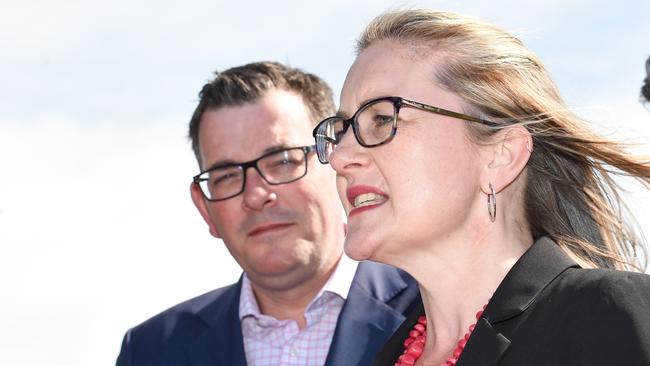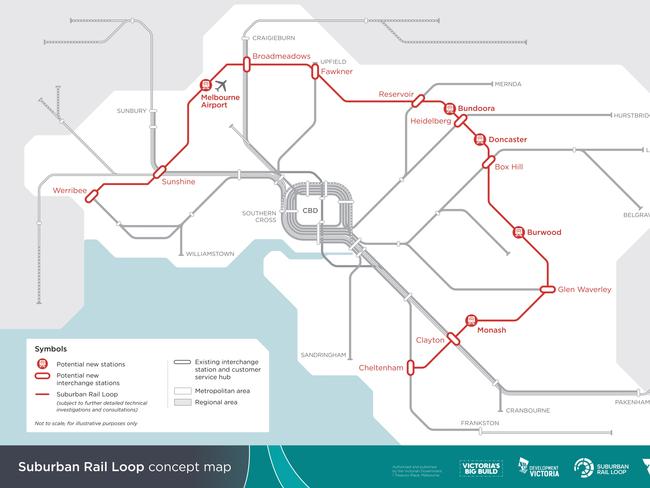Suburban rail loop borehole drilling begins in Box Hill
Melbourne’s $50 billion suburban rail loop is one step closer as engineers begin drilling boreholes underground to plan the railway line’s exact route.

VIC News
Don't miss out on the headlines from VIC News. Followed categories will be added to My News.
Engineers have started drilling boreholes 60 metres underground to plan the exact route of the $50 billion suburban rail loop.
The geotechnical drilling will initially be focused on Box Hill, with about six boreholes along what Rail Projects Victoria chief Evan Tattersall says is a “broad approach to where the alignment” of the giant tunnel will be.
Testing at each site will take around two weeks as rock and soil is analysed to determine what challenges could inhibit the project, with construction due to commence on the Cheltenham to Box Hill section in 2022.

Hundreds of boreholes will eventually be drilled around the city to shape the design of what Premier Daniel Andrews says will become Melbourne’s busiest railway line, carrying more than 400,000 passengers a day.
The state government has committed $300 million to design and plan the rail loop, but missed out on $300 million promised by its federal Labor counterparts after May’s federal election.
Asked if he would have to find that extra planning money himself or if he would seek the support of the Morrison Government, Mr Andrews said he was happy to speak to the Commonwealth but added: “I don’t have any expectations in that they’ve not made a promise.”

MORE NEWS: PARKING NIGHTMARE LOOMS AT STATIONS
INSIDE THE HIDE-OUT OF AUSTRALIA’S MOST WANTED
Financial ratings agency Moody’s warned this week that the size of the rail loop project — which is expected to take 30 years to build — highlighted “the challenge the state will face in retaining current fiscal objectives over time”.
Mr Andrews defended the government’s rising debt levels.
“We are borrowing to build,” he said.
“The real cost and the real pressure comes if we don’t get this infrastructure to build.”
“If (the government’s major projects) been built decades ago, they would have been cheaper.”



